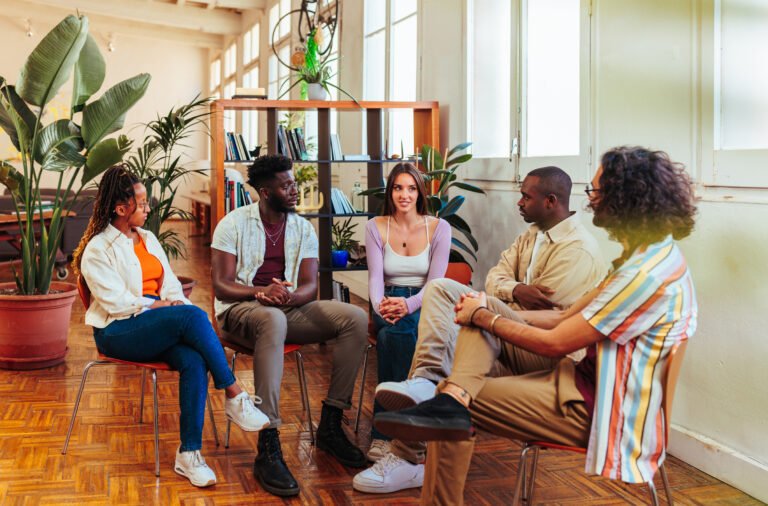
Depth and Complexity is an educational framework that uses specific icons and questions to help students think more deeply and broadly, improving critical thinking skills and engagement by encouraging multiple perspectives and detailed exploration of ideas.
Ever wonder how some teachers make learning feel both deep and doable? Depth and Complexity is a game-changing framework that lets educators boost thinking and personalize lessons without the headache. This guide breaks it down and shows you why it’s so effective.
What is the Depth and Complexity Framework?
The Depth and Complexity Framework is a straightforward set of tools teachers use to push students to think deeper and broader. Think of it like a toolbox for thinking—helping learners explore ideas from new angles and with extra detail.
Ever catch yourself wondering why some lessons stick with you, while others just bounce off? This framework digs into those “sticky” moments by encouraging curiosity and exploration beyond the basics.
At its core, it revolves around those neat little icons—like patterns, rules, ethics—that act as prompts. These aren’t just fancy symbols; they’re conversation starters, guiding you to analyze and ask richer questions.
- Depth means diving into the details and seeing parts relate to the whole. For example, instead of just knowing a fact, you’d ask, “Why does this matter?” or “How does it connect?”
- Complexity challenges you to look at multiple perspectives and layers. It’s like piecing together a puzzle where every piece counts and shifts your view a bit.
Think of using this framework like giving your brain a bubble bath—refreshing, cleansing, and leaving you ready to tackle problems creatively.
Honestly, you don’t need special training to start playing with these ideas—it’s about asking better questions and thinking in ways that feel more like a conversation and less like a test.
Key Elements and Icons Explained
The key elements and icons in the Depth and Complexity framework act like your thinking GPS. They guide students through complex ideas without getting lost.
Ever feel stuck wondering, “Where do I start?” That’s exactly why these icons matter.
There are eight core icons, each prompting a different way to think:
- Language of the Discipline: Focus on the special terms and vocabulary related to the subject.
- Details: Zoom in on specific facts, examples, and pieces that make up the whole picture.
- Patterns: Spot trends and recurring themes across ideas or events.
- Trends: Look at how things change over time and what those changes mean.
- Rules: Understand the guidelines or laws that govern a topic.
- Ethics: Think about the moral questions and what’s right or wrong.
- Big Ideas: Capture the main concepts that connect smaller details.
- Unanswered Questions: Identify what’s still unknown or needs exploration.
Picture these icons like different lenses on a camera—they each help you see the subject a bit differently.
Teachers love using them because they make lessons flexible and tap into a student’s unique way of thinking: visual, logical, ethical, or curious.
Honestly, playing with these icons feels a bit like detective work. You follow clues and piece together a story—or, heck, a whole mystery.
Quick fact: Studies show that teaching with varied thinking prompts helps students recall information 30% better over time. So yeah, these little icons pack a punch.
How Depth and Complexity Raises Thinking Levels
The way depth and complexity raises thinking levels is pretty clever. It pushes you beyond just memorizing facts—it’s about understanding and questioning.
Think of it like lifting weights for your brain. You start light, then gradually add more challenge.
- By diving deep, you ask “Why?” and “How?” instead of just “What?”
- Adding complexity means considering different viewpoints, causes, and consequences.
- It helps students develop critical thinking skills that stick far beyond the classroom.
You know that moment when something clicks—that “aha” that feels like unlocking a new level in a game? That’s what this framework aims for.
What’s cool is teachers can tailor questions to different learners, giving everyone a chance to engage at their own pace.
Research backs this up: Students using these thinking tools score up to 20% higher on standardized assessments according to a U.S. education study. So, this isn’t just theory; it works.
Honestly, it’s like giving your mind a creative workout—and who doesn’t want that?
Practical Classroom Uses
Wondering how to bring Depth and Complexity into your classroom without freaking out? It’s easier than you think. Heck, it’s like adding a new flavor to a classic recipe.
You don’t have to overhaul everything. Just sprinkle in these strategies:
- Use the icons as discussion starters. For example, ask, “What patterns do you see here?” or “What’s an ethical question this raises?”
- Encourage students to create their own questions based on the icons. It’s like giving them a thinking toolbox they get to use whenever.
- Differentiate assignments by complexity. Some kids dive into big ideas, others nail details—they all get challenged.
Here’s a pro tip: mix group work and individual reflection. Social learning and quiet thinking balance each other out.
Also, bring in real-world examples. Feeling stuck? Try linking lessons to current events or student interests. Like, who wouldn’t get curious about “rules” after watching a sports game?
Honestly, it’s like journaling, but with paint or questions—it helps students process ideas in a way that clicks for them.
Fun fact: Classrooms using this framework report up to 40% higher engagement. So, yeah, it’s worth a shot!
Getting Started with Depth and Complexity
Getting started with Depth and Complexity is simpler than you might think. You don’t need a big toolbox—just a few basics.
First, pick one or two icons to focus on. Think of it like dipping your toes into a new pool.
- Try using the “Details” icon by asking students to find specific examples in a text or lesson.
- Use the “Patterns” icon to explore trends or connections, like spotting common themes in history or books.
- Encourage students to generate their own questions based on these icons—it’s like handing them a mental flashlight.
Be patient—you won’t master it overnight. I thought—wait, maybe not all students will get it fast—but that’s okay. Growth takes time.
Next, mix these icons into your regular lessons. A quick question here, a group activity there. It’s flexible and fits right in.
Pro tip: Keep a poster or handout of the icons visible. It’s a gentle reminder for both you and the kids.
And hey, it’s not just for gifted students; this approach helps all learners dig deeper in ways that make sense to them.
Wrapping up
Using the Depth and Complexity framework is like giving your students a map to explore ideas more deeply and from different angles. It’s not about making things harder, but about making learning more interesting and thoughtful.
Remember, you don’t have to do it all at once. Start small, with one icon or question, and build from there. It’s totally okay if it feels a bit tricky at first—thinking deeply takes practice.
Hey, it’s okay to not know exactly where to begin—just take a breath and try one simple question today. Little steps lead to big thinking, and that’s something worth celebrating.
FAQ — your questions about depth and complexity answered
What is the Depth and Complexity framework?
It’s a set of thinking tools that help students explore ideas more deeply and from different perspectives.
How can teachers use Depth and Complexity in class?
They can use icons and questions to guide discussions and tailor lessons to different learning styles.
Can Depth and Complexity help all students, not just gifted ones?
Yes, it supports various learners by encouraging thinking at their own pace and level.
Is it hard to get started with Depth and Complexity?
Not really. Starting with a few icons or questions and practicing regularly makes it manageable.
Should students use all the Depth and Complexity icons at once?
No, it’s best to focus on a few icons at a time to avoid overload and build understanding gradually.
How does Depth and Complexity improve student thinking?
It encourages asking better questions and seeing connections, which boosts critical thinking skills over time.

A certified Heal Your Life® Coach with 20+ years in education and emotional development. Supports gifted teens in navigating anxiety, perfectionism, and identity challenges, while equipping parents with practical tools for lasting transformation. Sessions blend emotional healing, mindset mastery, and strategic empowerment.



